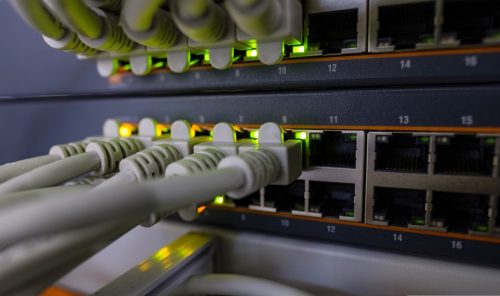A data network typically consists of a medium, end user devices and a network cabinet housing essential equipment for the organisation’s communication and data infrastructure.
Data networks utilise various mediums for information transmission, each with unique characteristics. Copper cables, like twisted pair cables, are common for wired connections. A typical network would include a mix of all mediums, for example, structured copper cabling, and WiFi to provide wireless access to the network.

Structured Cabling
A flexible, scalable and reliable structured cabling system adapts to organisational size and shape. It accommodates moves, increments and changes, providing a foundation for the modern information network. Copper (Cat6a) and fibre optic solutions, along with low-voltage cabling, offer versatility and durability. Structured cabling provides exceptional returns on investment (ROI) outliving all other networking components.
Advantages of structured cabling
For a more robust list of all possibilities check out our partners page, particularly, Conteg, Excel, & Siemon.
Get in touch with us today to speak to one of our professionals, and we will help you plan your network and implement it the right way.
Click here to get in touch or fill out the form on this page.

A dedicated and qualified team of IT experts to help you achieve your business goals.